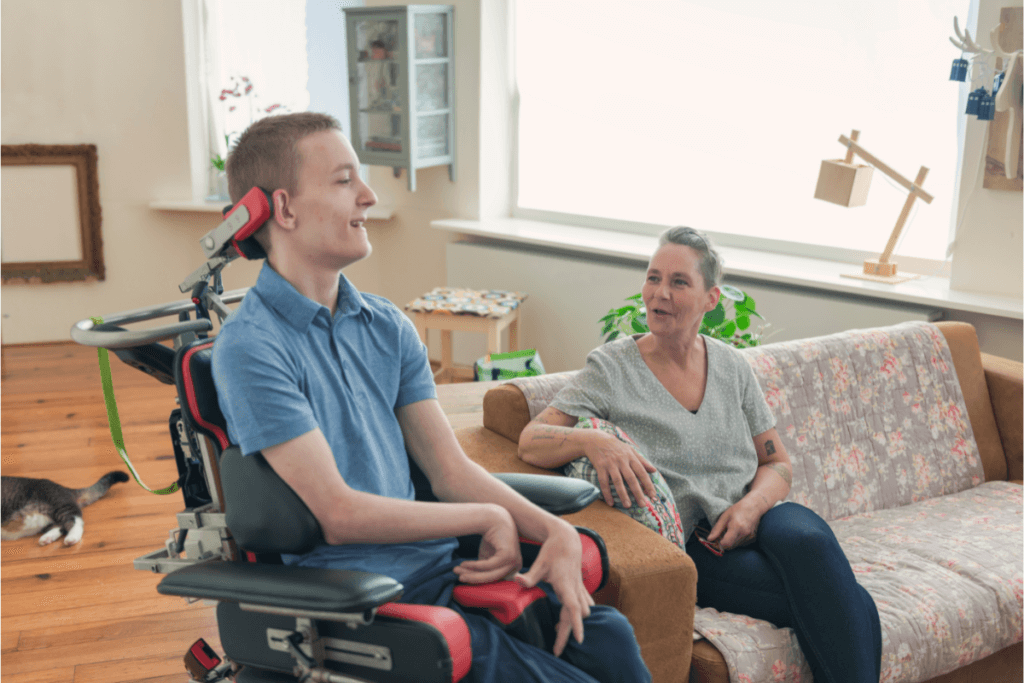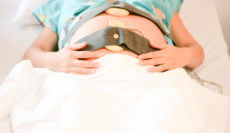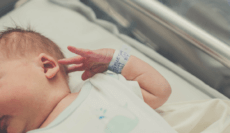Birth Injuries
Cerebral Palsy Life Expectancy

Cerebral palsy (CP) is a permanent neurological disorder that is the result of damage to or an abnormality in the developing brains of babies and very young children. Cerebral palsy is the leading cause of disabilities in U.S. children. The disorder affects muscle development which affects motor coordination and mobility.
Severe CP symptoms may be recognized in babies, while milder symptoms may not be noticed until a child is a toddler or slightly older. Treatment is based on the needs of the individual with the goal of improving function as much as possible.
The life expectancy of someone with cerebral palsy depends on a wide range of factors. Generally speaking, the more severe the disorder, the shorter the expected lifespan. However, advances in medical technology have helped extend the life expectancies of persons affected by cerebral palsy.
When Does Cerebral Palsy Brain Damage Occur?
For the majority of children who are diagnosed with cerebral palsy, the damage-causing situation occurs before the child is born or during the birthing process. Only about 10% of the children with cerebral palsy acquire it after birth due to a type of illness or injury.
The Centers for Disease Control and Prevention (CDC) reports that 85% to 90% of CP is congenital – meaning present at the time of birth. Though the specific cause of congenital CP is not known, there are certain risk factors that increase the likelihood a child will have CP.
The health of the mother during pregnancy can be an important factor in the healthy development of a child’s brain. Low birth weight and complications from being born prematurely also increase the chances a baby will develop cerebral palsy.
Contrary to what many people still believe, lack of oxygen to the brain during the birthing process is not the primary cause of congenital CP. Birth asphyxia is actually responsible for less than 10% of the cases of cerebral palsy.
How to Recognize the Signs of Cerebral Palsy
A child with cerebral palsy will display unusual behavior regarding muscle development or coordination. Children with CP often fail to achieve expected growth milestones. Muscles may be too tight or very loose. Limbs may be weak or have involuntary tremors. One side of the body may be more affected than the other.
Depending on the severity of the disorder, children with CP may also develop related conditions such as the following:
- Intellectual disorders – affects 30-50%
- Seizure disorders – affects about 50%
- Impaired vision
- Hearing loss
- Speech and language disorders – affects 75%
Main Types of Cerebral Palsy
There are three main types of cerebral palsy, characterized by the effect of the disorder on the body. The symptoms of any one type range from mild to severe. In some cases, people exhibit symptoms of more than one type of CP, depending on the location and extent of brain abnormality experienced.
Spastic Cerebral Palsy
Spastic cerebral palsy is the most common form of the disorder, affecting about 80% of those diagnosed with CP. It is characterized by extreme muscle stiffness that impairs mobility. It may primarily affect the legs or one side of the body.
In the most extreme form, it affects the entire body. Persons with spastic quadriplegia are often unable to walk and have other developmental disabilities.
Dyskinetic Cerebral Palsy
Uncontrolled movement of the hands, arms, feet, and legs characterizes dyskinetic cerebral palsy. Muscles of the face, including the mouth and throat, may also be affected. Involuntary movements may be slow or rapid, and muscle tone can fluctuate between tight and loose.
Ataxic Cerebral Palsy
Ataxic is the least common form of CP. Persons with ataxic CP struggle with coordination and balance. Rapid movement can be difficult, as can fine motor skills such as writing or buttoning a shirt.
Factors that Affect Life Expectancy with Cerebral Palsy
Once cerebral palsy is diagnosed, the treatment protocol includes measures to manage symptoms, reduce pain, and improve function and quality of life. Treatment may include physical therapy, the use of mechanical devices, drug therapy, and surgery.
There is no cure for CP, and although the condition itself does not progress, complications from having the disorder can lead to other health issues that can affect life expectancy.
People with well-managed, mild CP may have a relatively typical life expectancy. The risk of a shorter life expectancy increases with the severity of CP symptoms because the disorder impairs or inhibits other bodily processes. The most common causes of death for people with CP are often a consequence of living with the disorder, and include:
- Pneumonia
- Aspiration
- Seizures
- Accidents
- Infections
Generally, the greater the disability CP imposes on a person, the shorter the life expectancy. The following CP-related issues can be associated with premature death:
- Increased risk of injury from falls due to mobility and coordination issues
- Inability to adequately communicate and make decisions due to cognitive impairment
- Other health issues caused by developmental malformations
- Choking and malnutrition due to lack of muscle control of the mouth and throat
- Difficult respiration and decreased lung efficiency due to weakened muscles in the torso
Why Determining the Cause of Cerebral Palsy is Important
Learning a child has cerebral palsy can be devastating for a family. Plans must change, and accommodations will need to be made. Depending on the severity of the disorder, treatment and care expenses may be financially overwhelming, causing significant additional hardship.
Determining the exact cause of CP may not be possible in many cases, but there are situations where circumstances indicate a mistake made by a medical professional is responsible for the brain damage that caused cerebral palsy.
If a child’s cerebral palsy was caused by a medical mistake, it may be possible to recover compensation from the doctor and / or hospital involved for the damage done to the child and for the cost of care for the child’s life.
Circumstances that indicate CP is the result of medical malpractice include but are not limited to the following kinds of errors:
- Failure to diagnose a medical condition in the mother
- Failure to detect changes in fetal development or condition
- Failure to perform an appropriate procedure
- Improper use of medical equipment during delivery
Medical professionals are not expected to be perfect, but they must conform to the standards that have been designated as customary in the profession for the type of care being administered. When a healthcare professional deviates from the required standard of care, they may be held professionally liable for the resulting damage.
When Your Child’s Cerebral Palsy is a Personal Injury
If your child is diagnosed with CP, you may wonder how it happened and if you have any recourse. If you suspect medical negligence or even if you don’t know how your child developed cerebral palsy, speaking with an experienced birth injury lawyer can help you determine your rights and whether you may be able to seek compensation.
Lopez McHugh’s medical malpractice attorneys have over 50 years of combined legal experience advocating for the rights of patients in Philadelphia and holding medical professionals accountable for costly mistakes. Claims for medical negligence must be made within a limited period of time, so do not delay getting the valuable information that can help your family. Contact Lopez McHugh for a free consultation.








